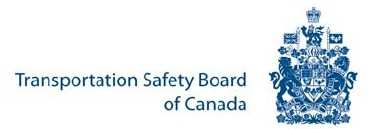Fri, Nov 21, 2014
Study To Begin Early Next Year
In a speech Wednesday to the Air Transport Association of Canada, Kathy Fox, Chair of the Transportation Safety Board of Canada (TSB), announced that the TSB will launch an in-depth Safety Issues Investigation (SII) into the risks that persist in air taxi operations across Canada. The study will begin early in 2015.

"The air taxi sector of the aviation industry has seen 175 deaths over the last 10 years—65% of all commercial aviation fatalities—and we need to determine why," said Ms Fox. "We'll be analyzing historical data and case studies of selected accidents in Canada as well as occurrences from other nations. We'll also be engaging industry, the regulator and other stakeholders in the coming months to gain a full understanding of the issues affecting air taxi operations."
Air taxi operations, or Canadian Aviation Regulations (CARs) 703, refer to single and multi-engine aircraft (other than turbo-jet) that have a maximum certificated take-off weight of 19,000 pounds or less, and a seating configuration, excluding pilot seats, of nine or less. Over the past 10 years, the TSB has repeatedly drawn attention to critical safety issues that contribute to accidents. These findings include recurring issues such as inadequate risk analysis of operations, crew adaptations from standard operating procedures, pilot decision-making, and deficiencies in operational control, especially in self-dispatch operations.
An SII (also known as a Class 4 investigation) is broad in scope and involves looking at multiple occurrences in order to identify the underlying safety issues, and the Board may make recommendations to address any identified systemic deficiencies. The TSB will communicate its findings once the investigation is complete.
The TSB is an independent agency that investigates marine, pipeline, railway and aviation transportation occurrences. Its sole aim is the advancement of transportation safety. It is not the function of the Board to assign fault or determine civil or criminal liability.
More News
Aero Linx: Model Aeronautical Association of Australia MAAA clubs are about fun flying, camaraderie and community. For over 75 years, the MAAA has been Australia’s largest fl>[...]
Touchdown Zone Lighting Two rows of transverse light bars located symmetrically about the runway centerline normally at 100 foot intervals. The basic system extends 3,000 feet alon>[...]
“Discovery and innovation are central to our mission at Virgin Galactic. We’re excited to build on our successful record of facilitating scientific experiments in subor>[...]
How To Get A Story On Aero-TV News/Feature Programming How do I submit a story idea or lead to Aero-TV? If you would like to submit a story idea or lead, please contact Jim Campbel>[...]
Student Pilot Reported That During Rotation, “All Of A Sudden The Back Of The Plane Kicked To The Right..." Analysis: The student pilot reported that during rotation, “>[...]
 ANN's Daily Aero-Linx (05.02.24)
ANN's Daily Aero-Linx (05.02.24) ANN's Daily Aero-Term (05.02.24): Touchdown Zone Lighting
ANN's Daily Aero-Term (05.02.24): Touchdown Zone Lighting Aero-News: Quote of the Day (05.02.24)
Aero-News: Quote of the Day (05.02.24) ANN FAQ: Contributing To Aero-TV
ANN FAQ: Contributing To Aero-TV NTSB Final Report: Cirrus Design Corp SR20
NTSB Final Report: Cirrus Design Corp SR20



